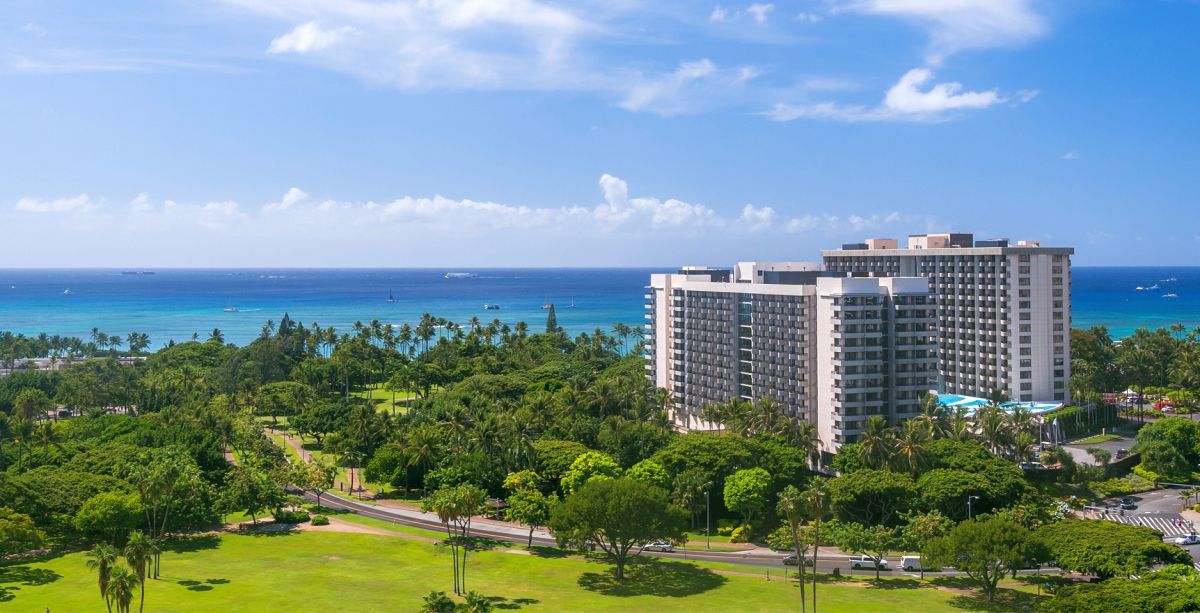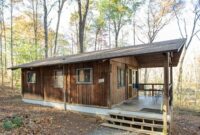Military Lodging Hawaii offers service members and their families a range of accommodation options across the islands. From cozy rooms to spacious family suites, these lodgings provide a comfortable and affordable alternative to civilian hotels. This guide explores the various types of military lodging available, their locations, reservation processes, and compares them to civilian options, ensuring a smooth and informed decision for your Hawaiian stay.
This detailed overview covers everything from the specific amenities and pricing structures offered by each branch of service to insights into the experiences of those who have previously utilized these facilities. We’ll delve into the reservation process, highlighting key policies and requirements, and provide helpful tips to make your stay as pleasant as possible. The convenience and cost-effectiveness of military lodging are weighed against the offerings of civilian accommodations, allowing for a well-rounded comparison.
Types of Military Lodging in Hawaii
Securing comfortable and affordable lodging is a significant concern for military personnel stationed in Hawaii. The diverse options available cater to various needs and budgets, ranging from basic rooms to more spacious family-friendly accommodations. Understanding the differences between these options is crucial for making an informed decision.
Military Lodging Options by Branch
The availability and specifics of military lodging in Hawaii vary slightly depending on the branch of service. While each branch generally offers similar amenities, pricing and availability may differ based on location, demand, and specific installation policies. Information regarding specific rates and availability should be obtained directly from the respective branch’s lodging office.
| Lodging Type | Branch of Service | Amenities | Price Range |
|---|---|---|---|
| Barracks | Army, Marines, Air Force | Basic rooms, shared bathrooms, limited kitchen facilities (sometimes none), communal recreation areas. | Generally the most affordable option, specific pricing varies greatly. |
| Unaccompanied Personnel Housing (UPH) | All Branches | Private rooms or apartments, typically with private bathrooms, may include small kitchenettes or full kitchens, access to common laundry facilities, and sometimes shared recreational amenities. | Moderately priced, usually more expensive than barracks but less than family housing. |
| Family Housing | All Branches | Varies greatly depending on the specific housing unit and location. Options range from single-family homes to townhouses and apartments. Amenities typically include full kitchens, multiple bedrooms and bathrooms, private yards or patios, and access to community recreational facilities such as pools and playgrounds. | Generally the most expensive option, with pricing influenced by size, location, and amenities. |
| Navy Getaways | Navy | Offers a range of lodging options, including hotels and resorts, often at discounted rates for service members. Amenities vary greatly depending on the specific location and type of accommodation. | Prices vary widely depending on the specific location and type of accommodation chosen. |
| Air Force Inns | Air Force | Provides lodging options on Air Force bases. Amenities generally include comfortable rooms, private bathrooms, and sometimes kitchenettes. | Pricing is competitive and generally lower than commercial hotels in the area. |
Amenities Comparison
The range of amenities provided across different military lodging options in Hawaii is considerable. Barracks typically offer the most basic amenities, while family housing provides significantly more comfort and space. Unaccompanied personnel housing falls somewhere in between, offering a balance of privacy and affordability. Many installations also offer shared recreational facilities, such as fitness centers, swimming pools, and playgrounds, regardless of the type of lodging.
Pricing Structures
Military lodging pricing in Hawaii is influenced by several factors, including the type of lodging, location, size of the unit, and the demand at the time of booking. Generally, barracks are the most affordable, followed by UPH, with family housing being the most expensive. Specific pricing information is best obtained directly from the relevant military installation’s housing office or website. Pricing also varies depending on the season; expect higher costs during peak tourist seasons.
Location and Accessibility of Military Lodging
Finding suitable lodging is a crucial aspect of any military assignment, and Hawaii, with its diverse geography and numerous military installations, presents a unique set of considerations. This section details the locations of military lodging facilities across the Hawaiian islands and examines their accessibility for service members and their families.
Military lodging in Hawaii is strategically situated to minimize commute times and maximize convenience for those serving on various bases. The proximity to key amenities, including airports and popular attractions, further enhances the overall quality of life for residents.
Geographical Locations of Military Lodging Facilities
Military lodging facilities are primarily located near major military installations across the Hawaiian Islands. On Oahu, lodging options are concentrated near Joint Base Pearl Harbor-Hickam, Marine Corps Base Hawaii (Kaneohe Bay), and Schofield Barracks. On the island of Maui, lodging is typically found near the Pacific Missile Range Facility. Other islands may have limited or no permanent military lodging facilities, often relying on alternative arrangements for personnel stationed on smaller outposts. The exact locations and availability vary depending on the specific branch of service and the needs of the military.
Accessibility of Military Lodging Facilities
The accessibility of military lodging in Hawaii varies depending on the specific location. Facilities near major bases like Joint Base Pearl Harbor-Hickam generally offer easy access to base amenities, including commissaries, exchanges, and medical facilities. Proximity to Honolulu International Airport (HNL) is also a significant advantage for those traveling frequently. Lodging near other bases, such as Marine Corps Base Hawaii, may offer more secluded settings, potentially requiring longer commutes to larger urban centers. Access to major attractions depends heavily on the specific location; some lodging is within easy driving distance of beaches, historical sites, and shopping centers, while others are more remote and require more extensive travel.
Transportation Options for Service Members and Their Families
Several transportation options are available to service members and their families staying in military lodging in Hawaii. On Oahu, the public bus system, TheBus, offers relatively affordable and convenient transportation throughout the island. Ride-sharing services like Uber and Lyft are also readily available, especially in more populated areas. Personal vehicles are common, and many service members choose to bring their own cars to Hawaii. For those stationed at bases with extensive facilities, the base itself often provides internal transportation options, such as shuttle buses. Between islands, air travel is the most common method of transportation, with inter-island flights frequently available. The availability and suitability of each transportation option depend on the specific location of the lodging and the individual needs of the service member and their family.
Experiences of Service Members and Families
Military lodging in Hawaii offers a unique blend of convenience and challenges for service members and their families. The tropical setting and proximity to various recreational opportunities are significant draws, yet the quality of experience can vary considerably depending on the base, the specific lodging unit, and the time of year. Understanding these diverse experiences is crucial for improving the overall quality of life for those serving in the state.
Feedback from service members and their families paints a picture of both positive and negative aspects of Hawaii’s military lodging. Positive experiences frequently cite the convenience of on-base housing, the stunning natural surroundings, and the overall value compared to off-base options. Conversely, negative experiences often center around maintenance issues, cleanliness concerns, and occasionally, less-than-stellar customer service.
Positive Experiences and Contributing Factors
Positive feedback consistently highlights the convenience and affordability of on-base lodging, especially for families undergoing Permanent Change of Station (PCS) moves. The ability to be close to work, access base amenities, and avoid the often-high cost of civilian housing in Hawaii is a major advantage. Many families also appreciate the sense of community found within military housing, with opportunities for interaction with other military families. Cleanliness and well-maintained units are also frequently mentioned as contributing to positive stays. Prompt responses to maintenance requests and helpful, friendly customer service further enhance the overall positive experience. For example, a family stationed at Joint Base Pearl Harbor-Hickam praised the responsiveness of the maintenance staff and the overall cleanliness of their unit, stating that it allowed them to focus on settling into their new assignment without unnecessary stress.
Negative Experiences and Contributing Factors
Conversely, negative experiences are often linked to maintenance issues, cleanliness concerns, and inconsistent customer service. Reports of malfunctioning appliances, pest infestations, and inadequate cleaning before occupancy are common. Delayed responses to maintenance requests, coupled with unhelpful or unresponsive customer service representatives, further contribute to negative experiences. The age and condition of some lodging units on certain bases are also factors, with older facilities potentially requiring more extensive maintenance. For instance, some service members stationed at Schofield Barracks have reported issues with outdated appliances and plumbing, leading to frustrating delays in resolving maintenance problems. The high demand for lodging during peak seasons can also exacerbate these problems, leading to longer wait times for maintenance and potentially less-than-ideal cleaning standards.
Comparison of Experiences Across Military Bases
While experiences vary, anecdotal evidence suggests that the quality of military lodging can differ between bases in Hawaii. Joint Base Pearl Harbor-Hickam, with its newer facilities and generally higher budget, tends to receive more positive reviews than bases with older housing stock. Schofield Barracks, for example, may have a higher incidence of reported maintenance issues due to the age of some of its lodging facilities. However, it’s important to note that these are generalizations based on available feedback and not a comprehensive statistical analysis. Individual experiences can vary widely even within the same base, depending on the specific unit and the time of year.
Summary of Service Member Feedback
The following bullet points summarize key aspects of service member feedback regarding military lodging in Hawaii:
- Positive Aspects: Convenience, affordability, location, community, cleanliness (in many cases), responsive maintenance and customer service.
- Negative Aspects: Maintenance issues, cleanliness concerns (in some cases), unresponsive customer service, outdated facilities (on some bases), high demand during peak seasons.
- Base-Specific Variations: Experiences can vary significantly between bases, with newer facilities generally receiving more positive reviews.
- Overall: While generally positive, the quality of experience is highly variable and depends on several factors, including the specific unit, base, and time of year.
Conclusion
Choosing the right accommodation is crucial for a successful trip, and understanding the nuances of military lodging in Hawaii is key. This guide has provided a comprehensive overview, equipping service members and their families with the necessary information to make an informed decision. From comparing amenities and costs to navigating the reservation process, we hope this resource has simplified the process and contributed to a more enjoyable Hawaiian experience. Remember to plan ahead and book your lodging early, especially during peak seasons.



